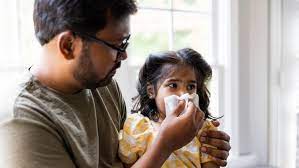Before the Covid pandemic, most people caught respiratory syncytial virus before the age of 2. Now things have changed. You may have seen respiratory syncytial virus, or R.S.V., in the news recently, as rates of the virus have ticked up across the United States. R.S.V. usually circulates from late December to mid-February. But this year, an early spike in cases is resulting in markedly higher numbers of infections and hospitalizations. As rising R.S.V. rates coincide with the expected wintertime surge in Covid-19 as well as an early flu season, experts are worried about a “tripledemic” and the strain it could place on hospitals and emergency departments that are already stretched thin. What is R.S.V. and why is it on the rise? R.S.V. is a common winter virus that typically causes mild cold-like illness in most people, but can occasionally be very dangerous for young children and older adults, said Emily Martin, an associate professor of epidemiology at the University of Michigan School of Public Health. “The youngest infants have a high risk of coming into the hospital in what we call their first R.S.V. season,” Dr. Martin said. “If a child is born in the summer and they get exposed for the first time in the winter, they are at risk of having more serious disease. But many infants didn’t experience the first R.S.V. season on the regular schedule that they would have, particularly if they were born in or after 2020.” In a normal prepandemic year, 1 to 2 percent of babies younger than 6 months with an R.S.V. infection may need to be hospitalized. And virtually all children have gotten an R.S.V. infection by the time they are 2 years old. But many experts believe masking, social distancing, school closures and other precautions taken during the first year or two of the pandemic protected most children from exposure to the virus and other germs. “As a result, there are still many children who are less than 3 years old who’ve never been exposed to R.S.V.,” said Dr. James Antoon, an assistant professor of pediatrics at Monroe Carell Jr. Children’s Hospital
https://www.nytimes.com/article/rsv-symptoms-treatment.html?smid=url-share



